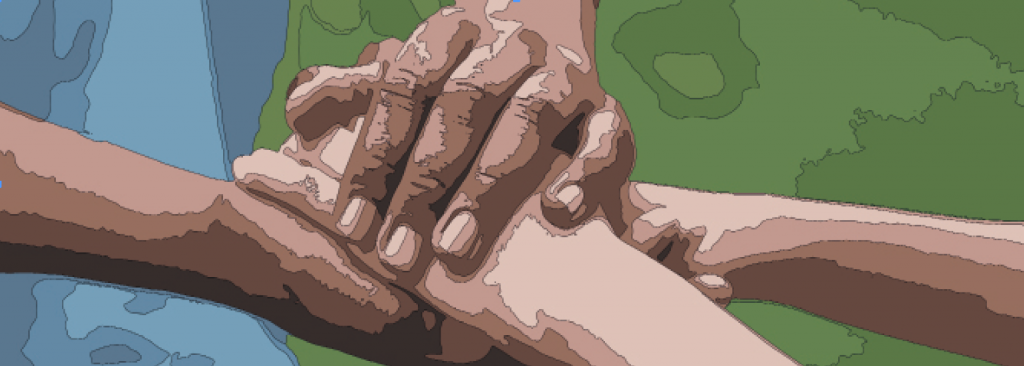Local history: charitable hospitals
23rd December 2020
A new year begins, and science continues its fight against the ravages of the pandemic. One feature of this dark time, writes Caroline Aston, has been the countless acts of kindness that have brought comfort to so many. The history of virtually every city, town and village in the country records the foundation of charities dedicated to alleviating and improving the lot of the less fortunate

In 1832 Harborough resident Sarah Goodwin left £100 (over £11,000 today) in trust, the interest being used to buy coal and to assist the overseers of the poor. She was literally following in the footsteps of the widowed Joan Austin, whose 1670 will made provision for shoes for the poor! Oundle boasts a host of such charities: in 1695 Francis Hodge made sure that poor children got Bibles, while Sir William Laxton established almshouses for seven men in a codicil to his 1556 will.
Founding a Hospital was another form of charity in those pre-welfare state days, but the meaning of the word ‘hospital’ was very different to today; these were small communities, places of safety where the needy were accommodated, governed by strict regulations set in place by the founder. Stamford once boasted at least three such establishments: St John Baptist and St Thomas the Martyr by the town bridge, St Giles outside the town housing lepers, while the magnificent Brown’s hospital in Broad Street stands as a monument to rich merchant William Brown.
Oakham’s Hospital
Oakham boasts a more modest Hospital still proudly serving its original purpose today. The Hospital of St John the Evangelist and of St Anne was the brainchild of a successful local businessman, William Dalby, who founded it in 1399. Dalby dealt in wool and sheepskin, and wool made Dalby a rich man. In later life, aware that ‘the flower of his life had been spent in earthly occupations and levity of pleasures,’ he decided to ‘offer an evening sacrifice to the Highest’ and applied for a royal licence to found a Hospital; this he built on land in the modern-day Westgate area, acquired two years before from William Chamberlayne. Originally, 12 poor men lived there with two chaplains, one acting as a permanent warden, the other a removable ‘sub-warden’. Dalby’s rules were strict: fornication and adultery, boozing, and hunting with dogs or birds were out, and praying took up a lot of time, especially for the souls of the Dalby family among others.
So began the long story of Oakham’s Hospital, where much depended on the character of the warden. Robert Watkinson (1548) seems to have been a bad egg, who ‘hawnted tavernes and unlawfull gammes’ and was extremely lax in his religious duties. In 1577 Francis Clement was causing waves: he was running a school at the Hospital and preaching without the Bishop of Peterborough’s permission! The Hospital seems to have degenerated into a badly run hostel for men, with a couple of priests thrown in for good measure. There were money problems, court actions, in-fighting – and then, salvation!
Archdeacon Robert Johnson, founder of Oakham and Uppingham schools, refounded the charity in 1597. Women were admitted, and the number of poor men, which had dropped to six, was increased to 20. Most important of all there were six governors, appointed to ensure better management, though this was to lead to periodic power struggles.
Darker days
Over the centuries Dalby’s dream slowly dwindled. In the mid-19th century the Midland Railway Company acquired a parcel of Hospital land to develop and paid £1,130 (around £118,000 today) in compensation to the charity. Records tell us how dilapidated things were, especially the small Hospital chapel. In 1848 the sub-warden Henry Scotney was ‘a drunkard… using alehouses and taverns, contrary to the statutes of the said Hospital’ and he was given three months to clean his act up or be dismissed!
In 1858 the chapel was cleaned up too, and the Vicar of Oakham, John Mould, saw that it again fulfilled its religious purpose. During the 1939–45 war it served as a storehouse for furniture from war-damaged houses and, after some years serving as a church hall, the building eventually became a Chapel of Ease in the parish.
Phoenix from the flames – to the present
As various landholdings were sold off, Dalby’s original concept was revived. Money raised was channelled into the creation of modern housing for senior citizens. The year 1976 saw the completion of flats in South Street on land bought from the Royce Eventide Homes charity, and in 1983 the St Anne’s Close housing complex centred around the restored chapel was opened, with Queen Elizabeth II visiting one year later. There have been developments funded at Uppingham, too, and this fine charity looks forward to continuing the vision of William Dalby for many years to come, administered by its dedicated trustees who would be delighted to hear from anyone who would like to join them in their future work.
For more information, visit stjohnstanne.co.uk



